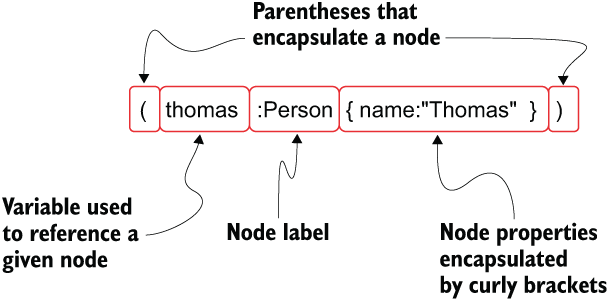So far, you have learned a bit of graph theory and how to approach the labeled-property graph modeling process. Now, you will begin to learn how to perform network analysis through practical use cases. To follow the examples in this book, you need to set up a Neo4j development environment. If you need some help getting started with the setup, see the appendix.
This chapter will introduce Cypher query language clauses and best practices for importing data into a graph database. First, I will do a quick recap of using Cypher query language syntax to represent networks in a textual format. If you are already familiar with the Cypher query syntax, you can skip most of the chapter and just import the data as shown in the last section. Remember from the previous chapter that the Cypher syntax uses parentheses to encapsulate a representation of a node. A quick reminder how to describe a node with Cypher syntax is shown in figure 3.1.
